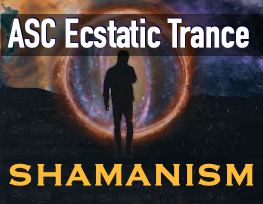 Entering an Alternate Reality: Ecstatic Trance & the Wisdom of Shamanic Cultures
Entering an Alternate Reality: Ecstatic Trance & the Wisdom of Shamanic Cultures
by Paul Robear
In this fast-paced digital world, we often find ourselves out of touch with our bodies, overwhelmed by thoughts, and disconnected from our place in the larger human story. The search for answers can become distracting, overlooking the wisdom already present within us: in the breath, the body, and our lived experience. Practices that lead to altered states of consciousness (ASC)—such as ritual, meditation, and ecstatic trance—offer a powerful shift. They open a pathway back to presence, to embodied spirituality, and to the deeper intelligence we carry within.
Shamanic cultures across the world—from the Amazon to Siberia, from West Africa to the Arctic—have known something that we in the modern West are only beginning to rediscover: that altered states of consciousness are not just anomalies of the brain, but vital gateways to wisdom, healing, and connection.
In many shamanic traditions, trance was the means to receive information for the community. The shaman would enter these states to find lost souls, heal the sick, retrieve visions, and speak with ancestors. These weren’t metaphors—they were realities accessed through a different mode of perception. That’s one of the most profound shifts I’ve come to understand through direct experience: that reality isn’t singular. It’s layered. There is the waking world, yes—but also the alternate reality, the dreamtime, the spirit world, the mythic world. And shamanic cultures didn’t rank them—they navigated them.
What is often dismiss in the western culture as hallucination or imagination, these cultures honored as vision. And when I experience ecstatic trance, I understand why. The body knows. Something at the soul level recognizes it. There’s a feeling of coming home to a part of myself that has always been there, just waiting for me to listen.
In today’s world, we are conditioned to stay in the logical, alert, daylight mind—the part of us that analyzes, organizes, and keeps us on task. It’s useful—necessary even—but it’s not the whole story. Ecstatic trance reminds us that we are more than our productivity and our linear thinking. It reconnects us with a part of the human experience that modern life often forgets—the intuitive, the symbolic, the deeply embodied.
In my own trance experiences, I’ve felt my awareness expand beyond the boundaries of time. I’ve encountered images, sensations, and understandings that felt both deeply personal and entirely universal. Sometimes there is a presence, a sense of being guided. Other times, it’s more like being dissolved into the cosmos—into a place where insight doesn’t come through thought, but through direct knowing. It’s humbling. It’s clarifying. And it is a reminder that consciousness is far more vast than we usually allow. I come back with a reset of perspective and priorities.
To enter trance is to cross a threshold. It is to say yes to the mystery. And in doing so, we follow in the footsteps of our ancestors and the ancients who knew that experiences of altered states of consciousness are not a break from reality—they are a bridge to a more complete version of it.
